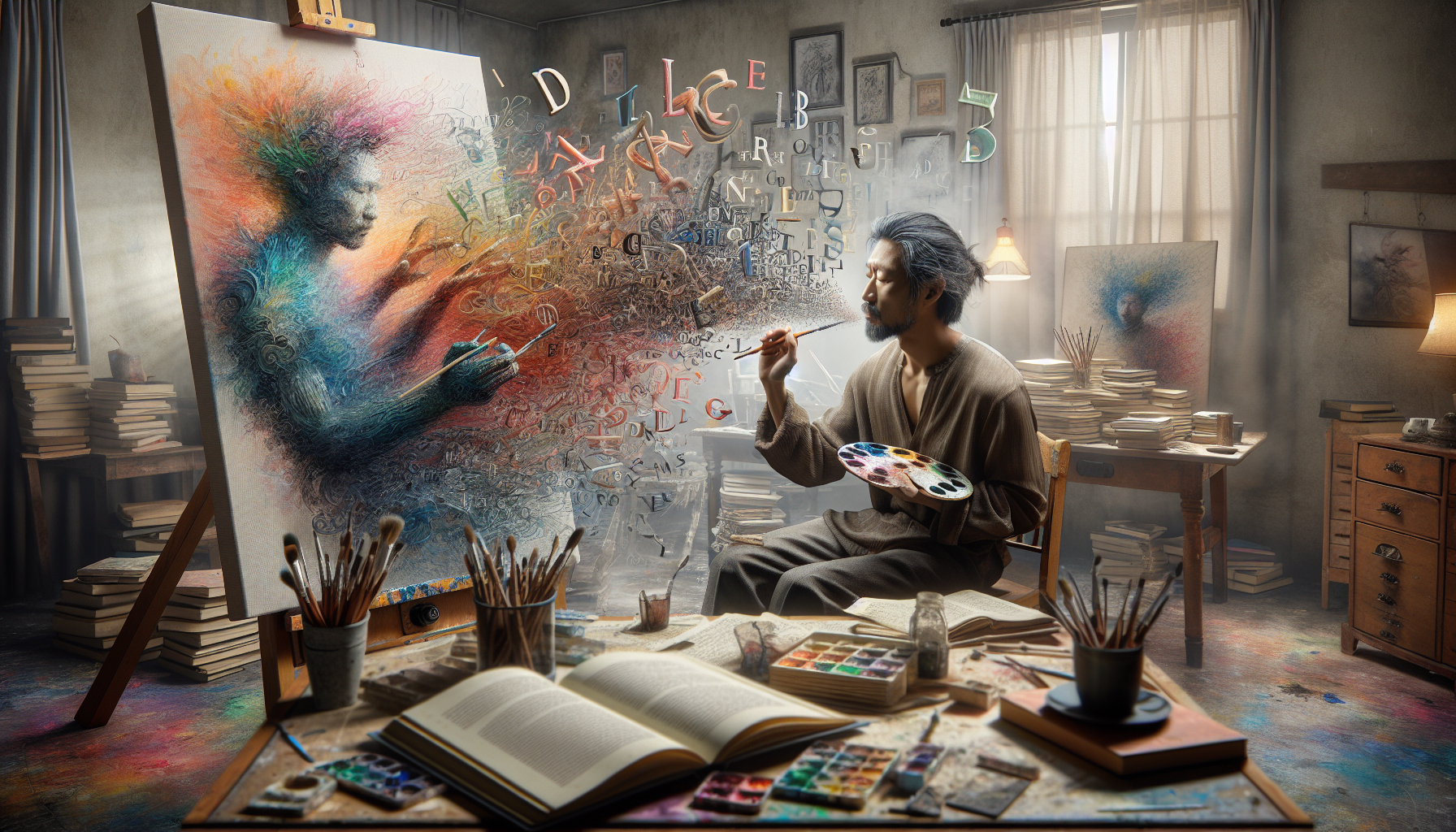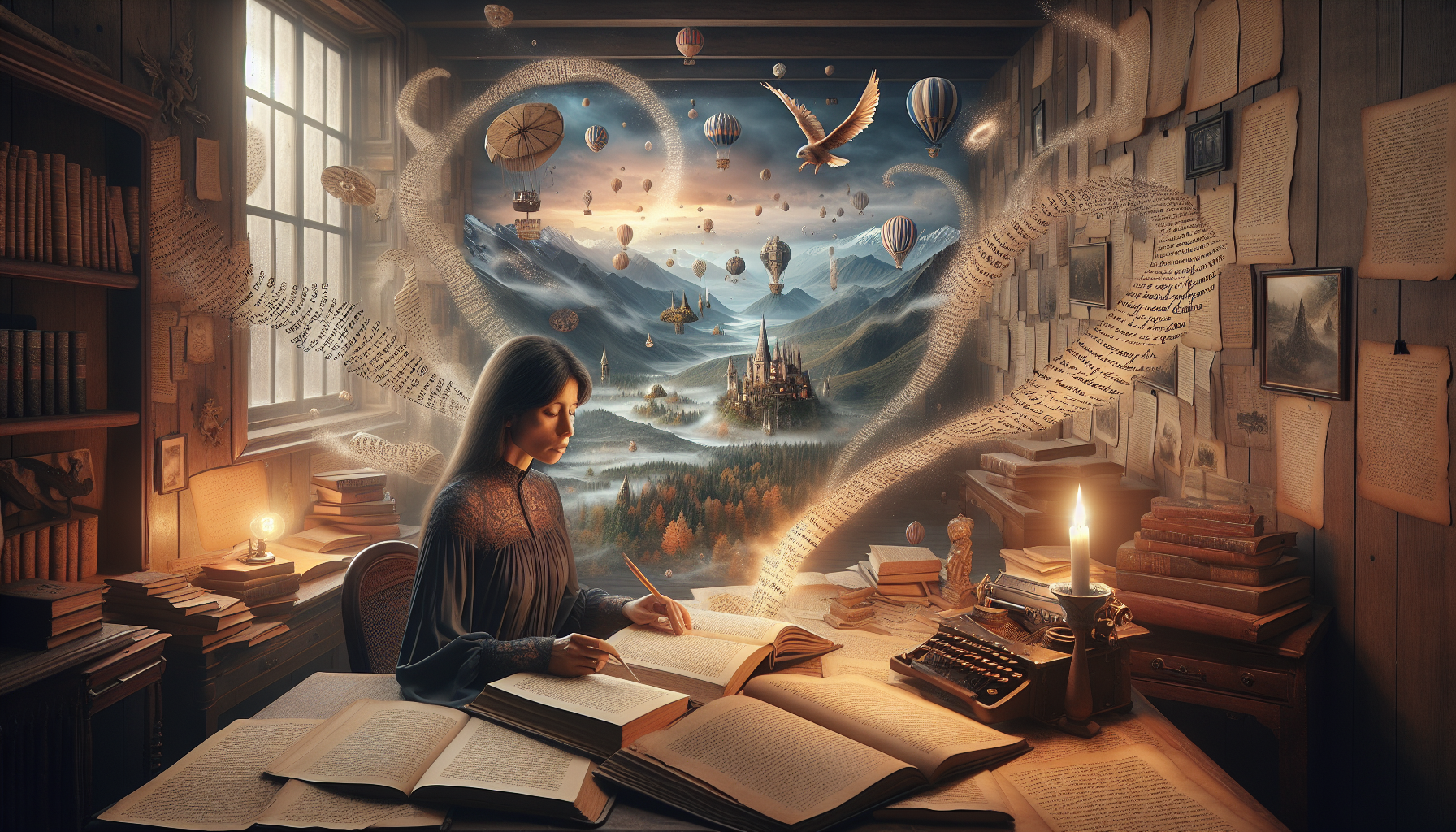In the dazzling realm of Hollywood, where imagination takes the reins and fantasy blurs the lines between reality and fiction, there exists a unique breed of artists whose work often goes unnoticed by the audience but is crucial to bringing fictional worlds to life. These unsung heroes, known as language creators or linguists, wield the magical power of language to construct entire lexicons, grammars, and phonetic nuances for alien civilizations, ancient tribes, and mythical creatures. As viewers are transported to distant galaxies, enchanted forests, and dystopian futures, it is the painstaking work of these linguistic architects that makes these universes believable and immersive.✨
Imagine watching a science fiction epic without the guttural growls and smooth syllables of an alien language, or a fantasy saga where the incantations of wizards are mere gibberish. The authenticity and richness of these invented languages play a pivotal role in suspending disbelief and pulling the audience deeper into the narrative. In this article, we will embark on a journey through the fascinating world of Hollywood linguists, exploring how they craft these languages and the impact of their work on storytelling. We will delve into the history of language creation in film, spotlight some iconic languages that have captivated audiences, and reveal the meticulous process behind their development.
From the intricate Elvish dialects in “The Lord of the Rings” to the rhythmic Na’vi speech in “Avatar,” language creators employ a blend of linguistic expertise, cultural understanding, and creative flair. They draw inspiration from existing languages, weaving together sounds and structures that evoke a sense of authenticity while ensuring accessibility for actors and audiences alike. Through interviews with renowned language creators, we will uncover the challenges they face in balancing artistic vision with practical constraints, such as time, budget, and the diverse needs of filmmakers.
As we peel back the curtain on this specialized craft, we will also consider the broader implications of language creation in film. How do these fictional languages influence our perception of real-world languages and cultures? What role do they play in promoting linguistic diversity and appreciation? By the end of this exploration, you will gain a newfound appreciation for the linguistic magic that breathes life into your favorite films and TV shows. So, prepare to immerse yourself in the extraordinary world of Hollywood linguists, where language is not just a tool for communication but a gateway to infinite possibilities.
The Role of Language Creators in Hollywood
The art of language creation, often known as conlanging, has played a pivotal role in the storytelling of Hollywood movies. From “Star Trek” to “Avatar,” these constructed languages add depth, authenticity, and a sense of realism to fictional worlds. While these languages might seem like mere tools to add flavor to a script, they are the result of intricate linguistic craftsmanship.
Language creators, or conlangers, bring fictional universes to life by developing languages that reflect the culture, history, and environment of their imaginary societies. This requires a deep understanding of linguistics, including phonetics, grammar, and semantics, as well as creativity and imagination. Conlangers work closely with filmmakers to ensure the language aligns with the vision and narrative of the film, providing an immersive experience for the audience.
The process of creating a language is both an art and a science. Conlangers often draw inspiration from real-world languages, incorporating elements that might be unfamiliar or exotic to the audience. This involves developing phonetic sounds, grammatical structures, and vocabulary. Additionally, the language must be learnable by the actors and interpretable by the audience. The success of a constructed language in film often hinges on its believability and its ability to convey emotion and nuance, bridging the gap between fiction and reality.
Famous Conlangs in Cinema
Some of the most iconic films owe part of their success to the languages spoken by their characters. A notable example is the Klingon language from the “Star Trek” series. Created by linguist Marc Okrand, Klingon is a full-fledged language with its own grammar and vocabulary. It has become so popular that it has even transcended the screen, with fans learning and speaking it in real life.
Another exemplary case is Na’vi, the language spoken by the indigenous people in James Cameron’s “Avatar.” Developed by linguist Paul Frommer, Na’vi is a complex language designed to reflect the culture and environment of the Pandora planet. Frommer’s work involved not only creating a language that sounded alien yet accessible but also teaching it to the actors to ensure authentic pronunciation and delivery.
The Elvish languages, Sindarin and Quenya, in J.R.R. Tolkien’s “The Lord of the Rings” series are also remarkable. Tolkien, a philologist, created these languages long before the films, enriching his novels with deep linguistic roots. The films brought these languages to a broader audience, highlighting their beauty and intricacy. Watch the video below to learn more about how Elvish was brought to life on screen:
The Process of Constructing a Language
Creating a language for a film involves several steps, each crucial to the language’s success and authenticity. The process typically starts with understanding the cultural and environmental context of the fictional world. Conlangers collaborate with directors, writers, and sometimes even actors to develop a language that aligns with the narrative and visual aesthetic of the film.
Phonetics is often the first step. Conlangers decide on the sounds that will be used, considering how they reflect the cultural and physiological characteristics of the species or society. This involves developing a phonetic inventory, which includes vowels, consonants, and any unique sounds. The goal is to create a language that is distinct yet learnable by the actors.
Once the sounds are established, conlangers focus on grammar and syntax. This involves deciding how sentences are structured, verb conjugations, and noun declensions. The grammar must be consistent and logical, providing a framework for communication within the film’s world. Finally, vocabulary development takes place, where words are created for everyday objects, emotions, and actions.
Conlangers also create scripts or alphabets, adding another layer of authenticity. This often involves designing writing systems that visually reflect the culture and aesthetics of the fictional society. For example, the Tengwar script used for Elvish in “The Lord of the Rings” is both functional and artistically expressive.
Collaborative Efforts in Language Creation
Collaboration is at the heart of successful language creation. Conlangers work closely with various departments to ensure the language fits seamlessly into the film. This includes costume designers, who ensure the language is accurately represented in written form on costumes or props, and sound designers, who help integrate the language into the film’s auditory landscape.
Actors play a crucial role as well. They must learn the language convincingly, often working with language coaches or the conlanger themselves. This process can be challenging, requiring dedication and linguistic agility. The goal is to deliver lines with emotion and authenticity, making the fictional language feel as natural as possible.
The production team must also consider how the language is presented to the audience. Subtitles and translations are often used to ensure understanding without detracting from the immersive experience. This requires careful balancing, as excessive subtitles can break the narrative flow, while insufficient translation can leave viewers confused.
The Impact of Constructed Languages on Film Success
Constructed languages have a significant impact on a film’s success, contributing to world-building and enhancing the viewer’s experience. A well-crafted language adds depth and believability, making the fictional world more engaging and memorable. It allows audiences to connect with the characters on a deeper level, understanding their culture, history, and motivations.
Conlangs also have a lasting impact beyond the screen, often becoming cultural phenomena. Fans embrace these languages, learning and speaking them in real life, creating communities around their shared interest. This fan engagement can contribute to a film’s longevity, keeping the fictional world alive long after the credits roll.
Moreover, the use of constructed languages can enhance marketing and merchandising efforts. Language-related merchandise, such as language guides, dictionaries, and courses, can become popular among fans. These products not only provide additional revenue streams but also deepen the audience’s connection to the film.
Challenges Faced by Conlangers
Despite their success, conlangers face numerous challenges. Balancing linguistic complexity with accessibility is one of the main hurdles. The language must be rich and believable yet simple enough for actors to learn and audiences to follow. This requires a delicate balance of creativity and practicality.
Time constraints can also pose a challenge. Film production schedules are often tight, leaving limited time for language development. Conlangers must work efficiently, often creating complex linguistic systems in a matter of weeks or months.
Budget limitations can affect the resources available for language creation. While large productions might have dedicated linguistic teams, smaller films may rely on the expertise of a single conlanger. This can limit the scope and depth of the language, affecting its authenticity and richness.
In conclusion, the art of language creation is a fascinating and complex field that significantly enhances the storytelling capabilities of Hollywood films. Through collaboration, creativity, and linguistic expertise, conlangers bring fictional worlds to life, captivating audiences and leaving a lasting legacy in the realm of cinema.

Conclusion
Creating languages for the vibrant and fantastical worlds of Hollywood is no small feat. Throughout this article, we’ve delved into the intricacies of language creation, exploring how linguists breathe life into fictional universes by crafting authentic, expressive, and culturally rich languages. These language creators, often unsung heroes of the film and television industries, wield their skills to add layers of depth and realism to the stories we love.
One of the primary themes we explored is the meticulous process of language construction. Unlike naturally evolved languages, constructed languages—or conlangs—require a deliberate approach, combining linguistic expertise with creativity. Language creators, such as the renowned David J. Peterson and Marc Okrand, employ a deep understanding of phonetics, grammar, and syntax to ensure that the languages they create are not only plausible but also resonate with the culture and context of the fictional world. For instance, Peterson’s Dothraki and High Valyrian languages for “Game of Thrones” reflect the intricacies of the cultures they belong to, enhancing the viewer’s experience by making the world of Westeros more immersive and believable.
Another significant point discussed is the cultural and narrative significance of these constructed languages. A well-developed conlang does more than just provide dialogue for characters; it enriches the story’s universe, offering insights into the social structures, histories, and values of the fictional societies. The Klingon language from “Star Trek,” crafted by Marc Okrand, serves as a prime example. The harsh and guttural sounds of Klingon mirror the warrior culture of its speakers, while its complex grammatical rules reflect the intricacies of Klingon society. This attention to detail allows audiences to engage with the narrative on a deeper level, creating a more satisfying and memorable viewing experience.
Moreover, we highlighted the challenges faced by language creators, including the pressure to deliver languages that meet the expectations of both the creators of the show or film and its fan base. These linguists must balance the demands of storytelling with the linguistic authenticity, often working under tight deadlines. Despite these challenges, the results are languages that not only serve the narrative but also inspire linguistic enthusiasts worldwide to learn and use them, as seen with the widespread study of Klingon and Elvish.
The impact of language creators extends beyond entertainment. By showcasing the beauty and complexity of language, these linguists foster an appreciation for linguistic diversity and creativity. Their work encourages audiences to think critically about language, culture, and communication, promoting a greater understanding and respect for the richness of human expression. This celebration of linguistic creativity can also inspire new generations of linguists and language enthusiasts to explore the field of language construction.
As we conclude our exploration of the magical world of Hollywood’s language creators, it is important to recognize the invaluable contributions these artists make to storytelling. Their dedication to their craft enhances the depth and authenticity of fictional worlds, providing audiences with experiences that are as intellectually stimulating as they are entertaining. The next time you find yourself captivated by the dialogue in a fantasy epic or a sci-fi adventure, take a moment to appreciate the artistry behind the words—crafted with care by the language creators who work tirelessly behind the scenes.
We encourage you to reflect on the themes discussed in this article and consider how language influences your own perceptions of culture and identity. Feel free to share your thoughts and engage in conversations about the role of language in storytelling and its impact on our understanding of the world. Sharing this article with friends and fellow enthusiasts can spark discussions and deepen the appreciation for the art of language creation. Let’s celebrate the creativity and innovation of these talented linguists who transform fictional worlds into living, breathing realities.
For those interested in learning more about the fascinating work of language creators, resources such as David J. Peterson’s book “The Art of Language Invention” [link] offer an in-depth look into the process and challenges of conlanging. Similarly, exploring online communities dedicated to constructed languages can provide further insights and inspiration for aspiring language creators. 🌟
In a world where communication is key, the art of language creation reminds us of the power and beauty inherent in every word, phrase, and sentence. As we continue to enjoy the stories brought to life by these linguistic artists, let us also be inspired to explore the languages and cultures that shape our own world. Thank you for joining us on this journey into the magical world of language creators—may it inspire you to view language in new and exciting ways!
Toni Santos is a visual cryptographer and artisan, weaving hidden meaning into every line, curve, and composition. His creations delve into the mysterious world of secret codes, symbolic alphabets, and invented languages, transforming visual art into a rich tapestry of communication beyond words.
Guided by a lifelong fascination with hidden knowledge and the power of symbols, Toni explores how meaning can be embedded, concealed, and rediscovered. From constructed glyphs to encoded illustrations, each piece he creates serves as a portal to a deeper layer of understanding — one that invites curiosity, interpretation, and wonder. His work bridges the intuitive with the intellectual, the mystical with the methodical.
With roots in handcrafted artistry and a background in visual semiotics, Toni fuses form and function to create works that whisper rather than shout. These are not just images — they are visual riddles, poetic encryptions, and artifacts of a language yet to be spoken.
As the creative mind behind Vizovex, Toni offers a space where art meets encryption, and viewers are invited to decode, reflect, and engage. Through symbolic design, visual lexicons, and explorations into constructed languages, he builds a universe where meaning is layered, intentional, and always slightly out of reach — waiting to be discovered.
His work is a tribute to:
The unseen languages that shape our perception
The art of hidden messages and symbolic systems
The thrill of decoding and the beauty of mystery
Whether you’re a language lover, a codebreaker at heart, or someone drawn to the enigmatic, Toni invites you to explore a world where expression transcends convention — one glyph, one message, one mystery at a time.





